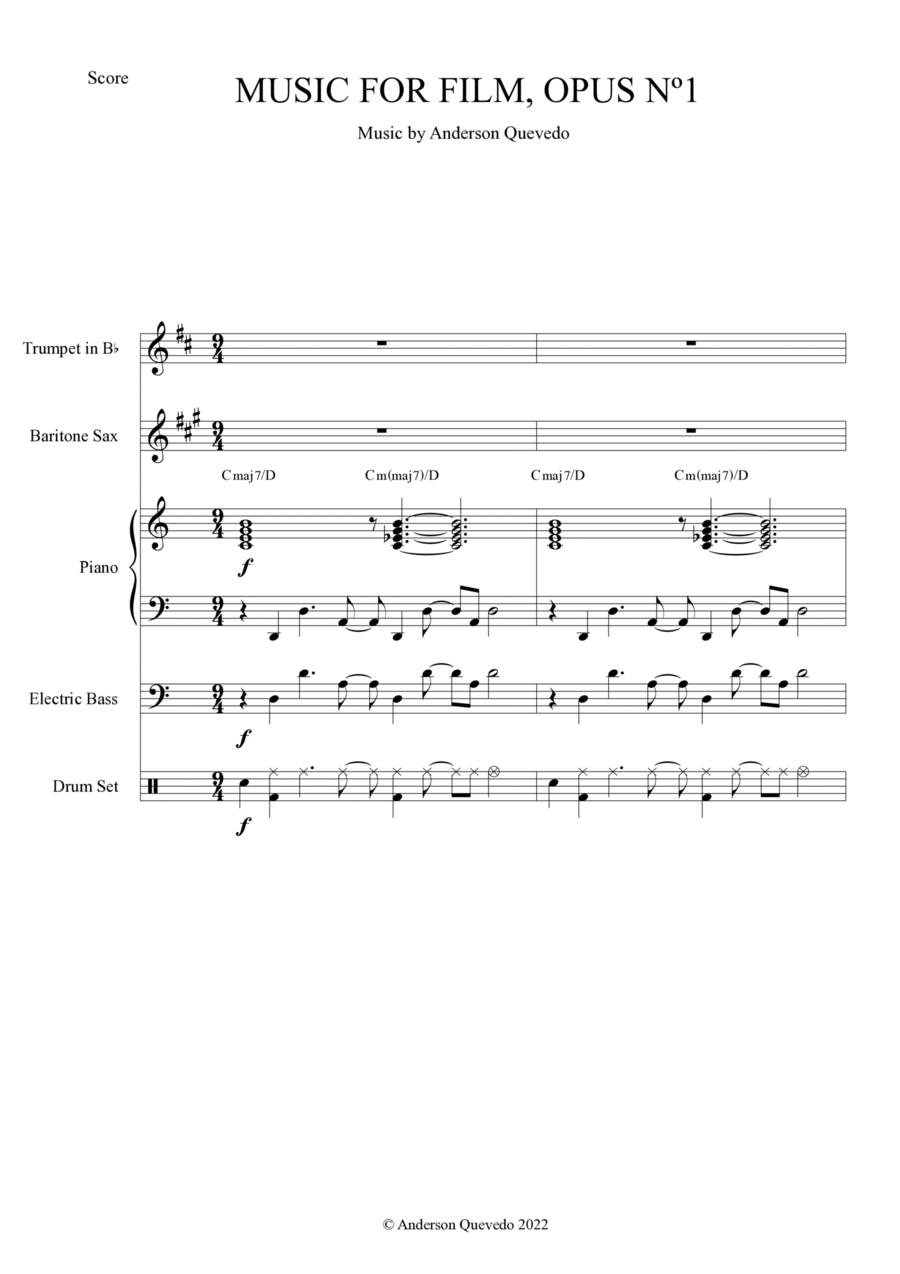Jazz Combo - Level 4 - Digital Download SKU: A0.1047852 Composed by Anderson Quevedo. Arranged by Anderson Quevedo. Contemporary,Jazz,Latin,Multicultural,World. Score and parts. 32 pages. The Sheet Music Library #652295. Published by The Sheet Music Library (A0.1047852). Music For Film Opus 1 is a beautiful brazilian jazz composition by brazilian saxophonist Anderson Quevedo written fro baritone sax, trumpet or flugelhorn, piano, bass and drums. It's a partido alto in 7/4 time signature with a dense yet beautiful harmony. Hope you enjoy!
